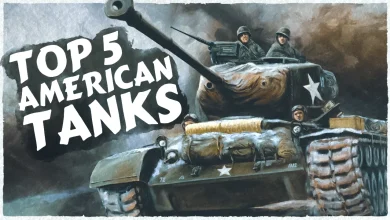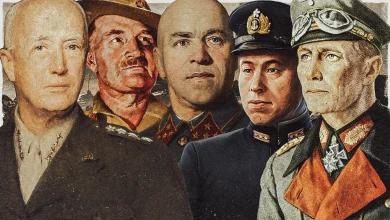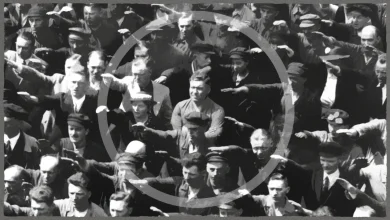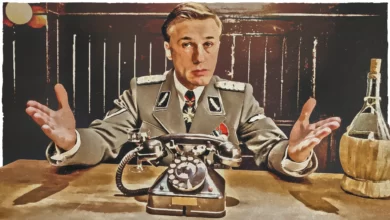Battle of Kursk – The Largest Tank Battle of World War 2
After the heavy losses sustained by the opening of Operation Barbarossa, the Wehrmacht reached a decisive turning point. They could wait and be pummeled by an imminent Soviet offensive or take the upper hand and launch its own operation to encircle and subjugate the Red Army. The decision came to Adolf Hitler, and the dictator opted to bet all of his armored forces and put together a decisive offensive at Kursk codenamed Operation Citadel. However, the British let the Soviets know of the exact dates and locations where the offensive would take place, and thus the Battle of Kursk began. More than 2 million men, 7,000 tanks, and over 4,000 aircraft would participate in the world's largest tank battle, where the Germans were outnumbered 3 to 1 in men, armored vehicles, and supplies. The advance was bitter and brutal, but the Germans still fought tooth to nail against a relentless Soviet army that had the resources to drain them out to the last man, bullet, and tank.

Preparing the Offensive
The Fuhrer and the military command believed that during the first months of Operation Barbarossa, the city of Moscow would fall to the unstoppable German forces. But they quickly discovered that they had underestimated the Soviet population.
Despite successfully encircling and crushing multiple Soviet Armies that surpassed 600,000 prisoners of war, the Soviets were still able to bring more fresh recruits out of nowhere.
As the Germans pushed deeper into enemy lines, the social supply networks failed to catch up to their blitzkrieg speed. Meanwhile, the Soviets were experiencing the exact opposite. As they got pushed farther back after adopting a scorched earth tactic to leave anything but rubble and ashes to the invaders, they concentrated their forces and counterattacked in big masses.
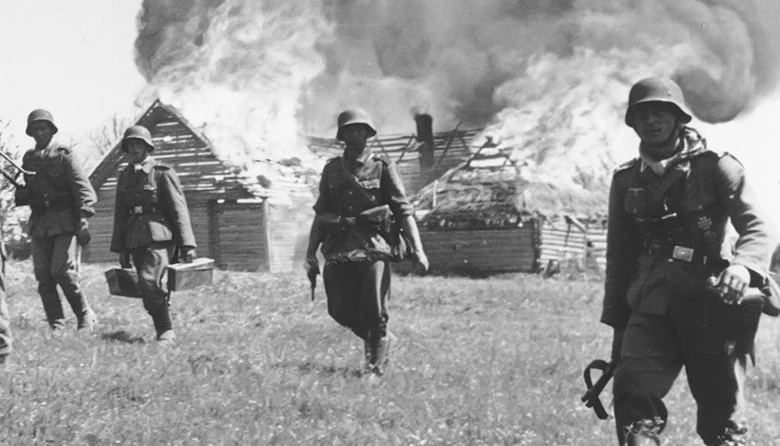
Stalingrad then became the embodiment of what combat at the Eastern Front would become. When the German Sixth Army reached Stalingrad in September of 1942, they were caught off guard by the sheer amount of enemy resistance, civilian and military alike.
By November, the Germans were outnumbered, outgunned, and encircled by the Soviets. But as long as there was a fighting chance and the Sixth Army could retreat before being wiped out, Hitler wanted them to hold their ground. The promised supplies and reinforcements never arrived, and thousands of Germans perished during the harsh winter season.
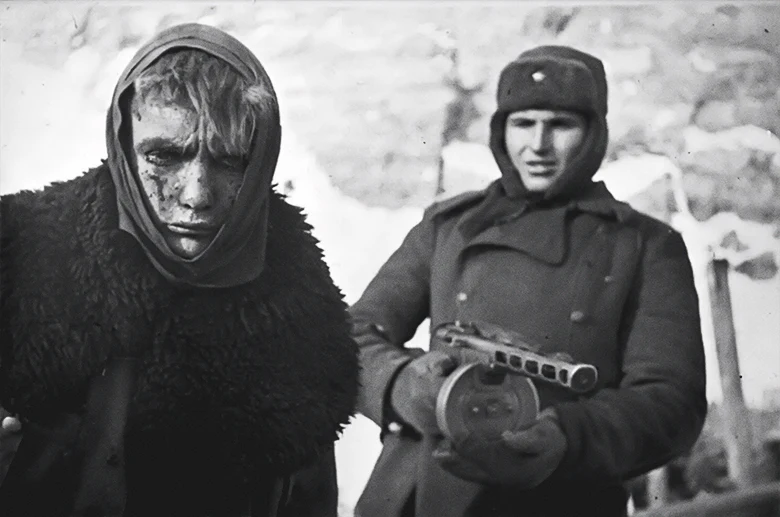
On February 2, 1943, Catholic Field Marshall Paulus refused to follow Hitler’s suicide policy to fight to the last man and surrendered with his surviving troops to give them a chance to survive.
During the conflict, the Axis lost more than 260,000 seasoned war veterans that would be sentenced to die in the infamous gulags. The loss at Stalingrad became the turning point of the Eastern Front. It pushed the Germans to the South of Russia and forced them to adopt a defensive posture.
Meanwhile, Soviet forces took advantage of the momentum and high morale, and they launched Operation Little Saturn, a series of offensives to put more pressure on the Axis.
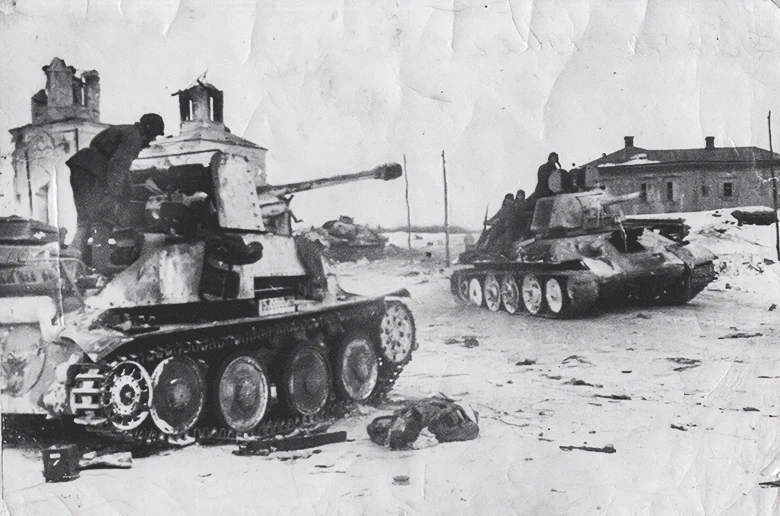
The ensuing confrontations broke the lines and left gaps and salients from Leningrad in the far North to the Black Sea in the South. A wide gap of more than 200 kilometers had opened between German Army Group B and Army Group Don, while Soviet advances threatened to cut them off from Army Group A operating in the Caucasus.
By April of 1943, the Communists forces had retaken Kursk and Rostov, and their multiple offensives at all fronts threatened to break through Axis lines.
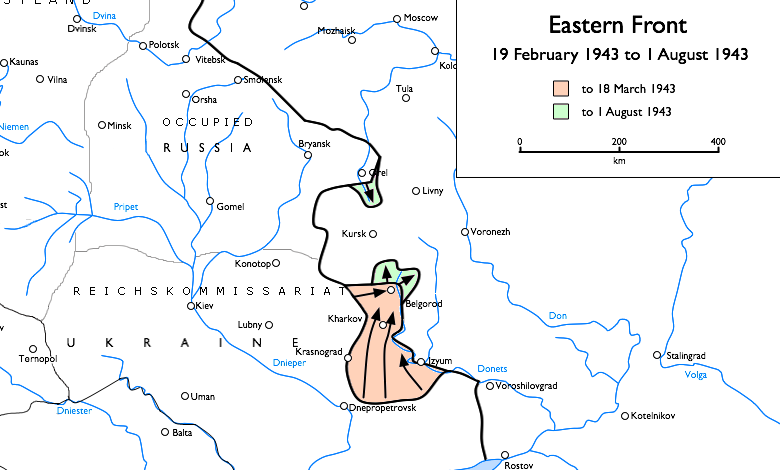
And there, at the center of the most significant salient, lay Kursk.
After defeating the Soviets at Belgorod and Kharkov, Field Marshal Erich von Manstein requested the Fuhrer unrestricted operational freedom to crush the Soviet advance and put Germany back in the offensive again.
Upon approval, the Army Groups reorganized and the troops prepared for a massive offensive.
Operation Citadel
The planned operation was codenamed Zitadelle or Citadel, and its objective was the capture of the Kursk salient. It called for a double envelopment to seal off the salient and obliterate the Soviet armies inside it.
Army Group Center would form the northern pincer, while Army Group South, under the command of Hermann Hoth, would pierce the south of the salient.
The western sector of the salient would be contained by the 2nd Army under the command of Walter Weiss. At the same time, the main attack would be delivered by the Second SS Panzer Corps of Paul Hausser.
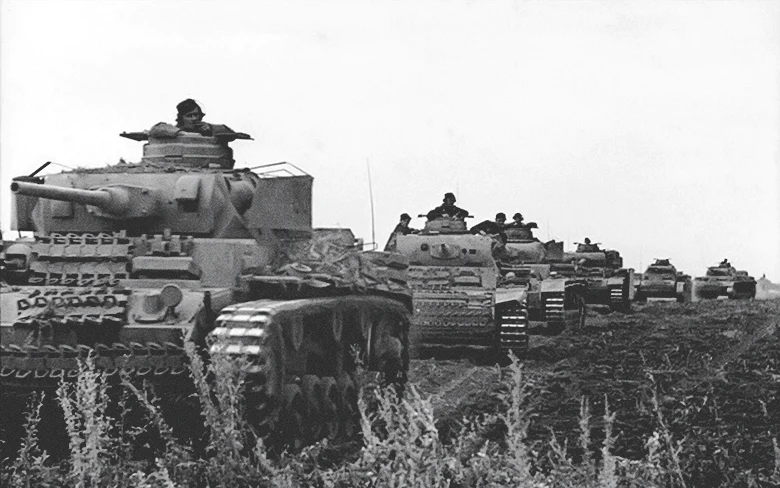
Troops, ammunition, tanks, and aircraft began to arrive by the thousands to the battlefields. The Wehrmacht ultimately amassed more than 700,000 men, 3,000 tanks, 2,500 aircraft, and 10,000 guns and mortars.
The Russians, fearing that something big was going to happen, did the same and began overproducing as many tanks, artillery, and aircraft as they could.

Within months, the Red Army recruited more than one million and five thousand men, 5,000 tanks, 3,000 aircraft, and over 20,000 machine guns and mortars. The Germans were now outnumbered 3 to 1, but they did not know it just yet.
Then, in April of 1943, General Walter Model met with the Fuhrer to discuss his concerns over the Soviets building defenses around the salient.
Meanwhile, the British were able to gather information through the Enigma Machine and alerted the Soviets, which began building 8,000 kilometers of trenches and eight lines to repel the Germans.
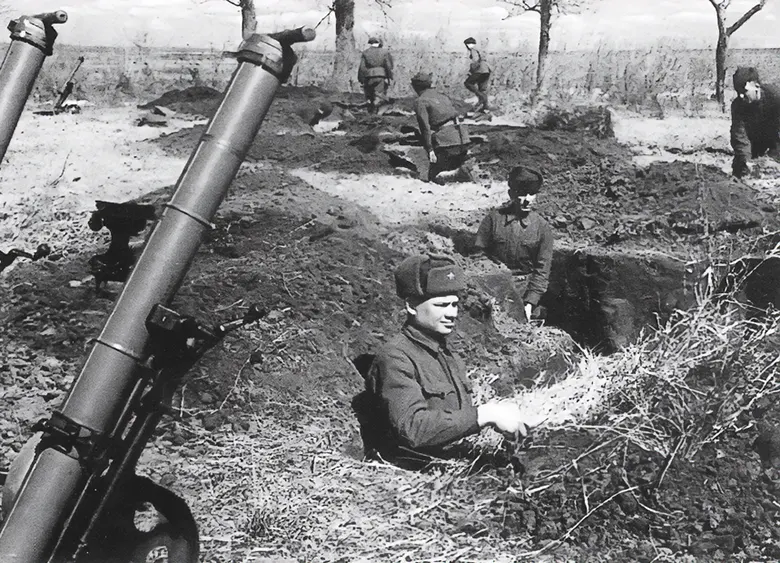
Some officers argued that the operation had to be canceled. But others, like Kluge, opted for an immediate blitzkrieg-style attack. In the end, Hitler and Model opted to postpone it and give it more thought.
During this time, Albert Speer, Minister of Armament and War Production, explained that the industry would not replace the armored vehicles lost if the offensive happened. And to make matters worse, many of the new Tiger, Panther, and Elephant tanks that would be used for the first time were still not fully operational.
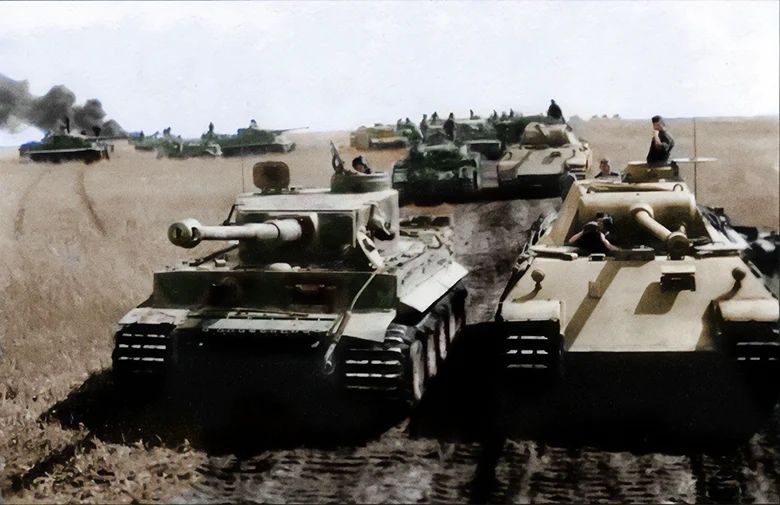
General Heinz Guderian, the master of armored warfare, told Hitler: “Is it essential to attack Kursk, and indeed in the east this year at all? Do you think anyone even knows where Kursk is? The entire world doesn’t care if we capture Kursk or not. What is the reason that is forcing us to attack this year on Kursk, or even more, on the Eastern Front?” To which Hitler replied: “I know. The thought of it turns my stomach.”
Still, Hitler finally established July 5 as the launch date of the offensive, arguing that if they did not attack, the Soviets would do it first. And he was right.

Tanks vs. Tanks
On the morning of July 5, 1943, the Soviet Air Force unleashed a hellish bombardment to decimate the German armor advances, but it didn’t work.
The German armored cavalry was not going to back down easily. And with additional assistance provided by the Luftwaffe, the 2,000 outnumbered brave German aces rose to the skies to halt the Communist bombers.
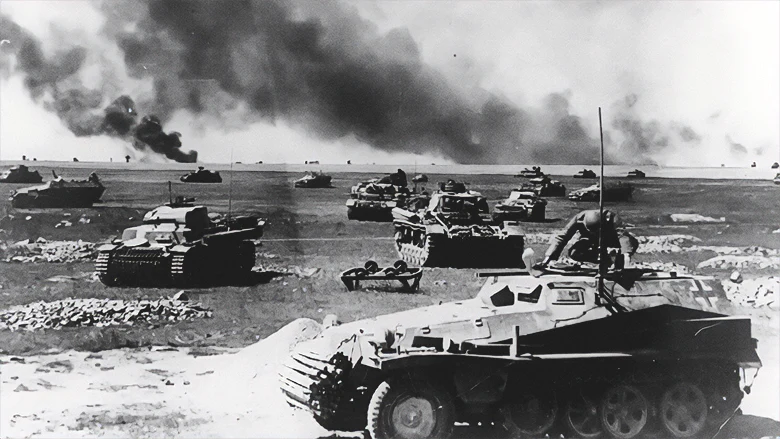
As the sky turned grey with smoke and machine-gun fire, the Heer fired an artillery barrage on the northern and southern sectors of the salient.
The infantry then advanced to the first Soviet lines of defense to clear the trenches and let the tanks pass. The advance was unsparing. The Germans had to get close and personal to clear the enemy lines, but despite their bravery and superior strategy, numerical superiority was against them.
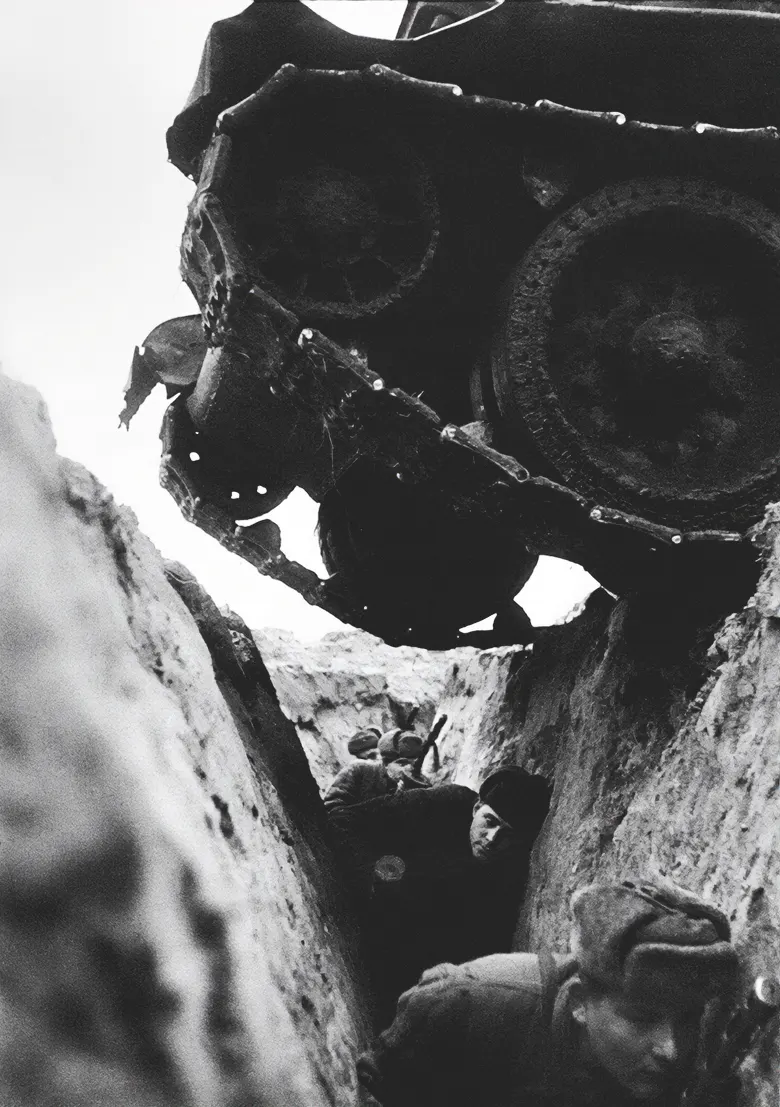
General Hoth’s troops also broke through the second line of defense, but Soviet resistance stiffened for every meter won. Josef Harpe, commanding the XLI Panzer Corps, then occupied Ponyri station, and they had to eliminate pockets of resistance throughout the night.
Using the light emitted by the burning buildings, the panzers had a tough time distinguishing friend or foe, and German vehicles began to steadily decrease. Despite inflicting superior losses to the Soviets, the high kill death ratio of the Tigers, Panthers, and Elephants was not enough to decimate the impetus of the Soviet Armor. For every German tank lost, the Soviets had three as a backup.

The odds were slowly turning against the Reich. In the span of little more than a week, the offensive was brought to a halt. In the north, the Red Army counterattacked, but Model held his ground and moved two kilometers deeper.
By July 10, Model’s 9th Army had lost 20,000 men and 200 panzers. Hoth’s 4th Army was decimated to just 500 panzers out of 916. Two days later, the Soviets counterattacked with overwhelming odds. The heat of the combat took place in the village of Prokhorovka, armor to armor.
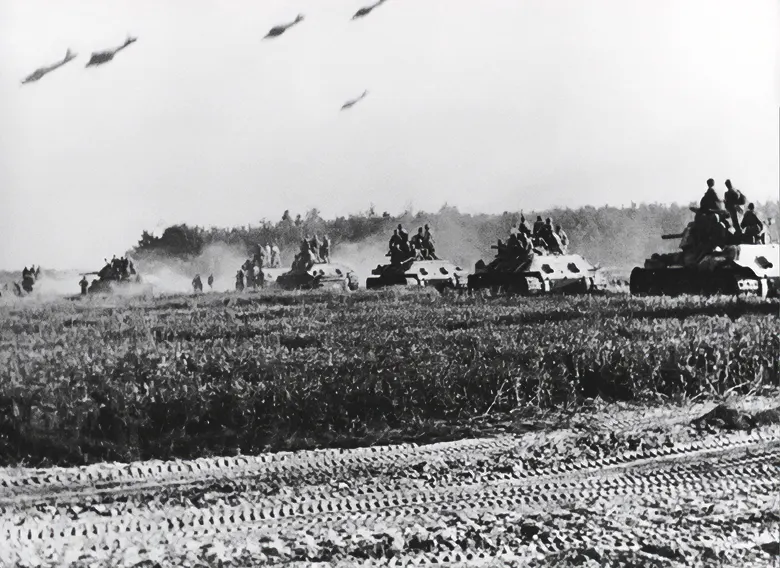
The elite SS Panzer divisions led by Hausser then arrived at the morrow and reported to headquarters the sounds of tank engines approaching from all directions. Dense fog, smoke, and the absence of light did not allow the Germans to see the enemy. But the Soviets were there, and they could hear the roar of their engines. The Germans did not know that Lieutenant General Pavel Rotmistrov’s 5th Guards Tank Army was hidden very close to the village, and at 8:00 am, an artillery barrage disoriented the Waffen SS soldiers.
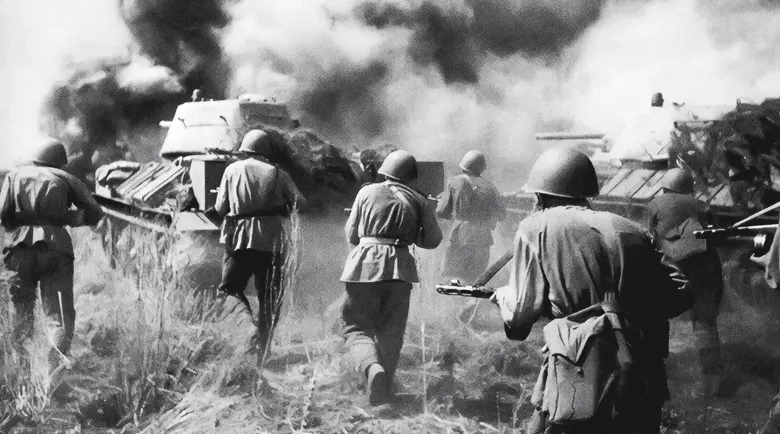
Minutes later, Rotmistrov radioed his men: “Steel! Steel! Steel!” and the tanks rolled in at maximum speed to confront the panzers. German aircraft tried to provide support, but smoke and dark sand of melting buildings and fields made bombload deliveries inaccurate and less effective.
Meanwhile, the 3rd SS had trouble flanking the enemy as it advanced through minefields and hidden anti-tank guns. And although they were ultimately successful, they lost half of their vehicles.
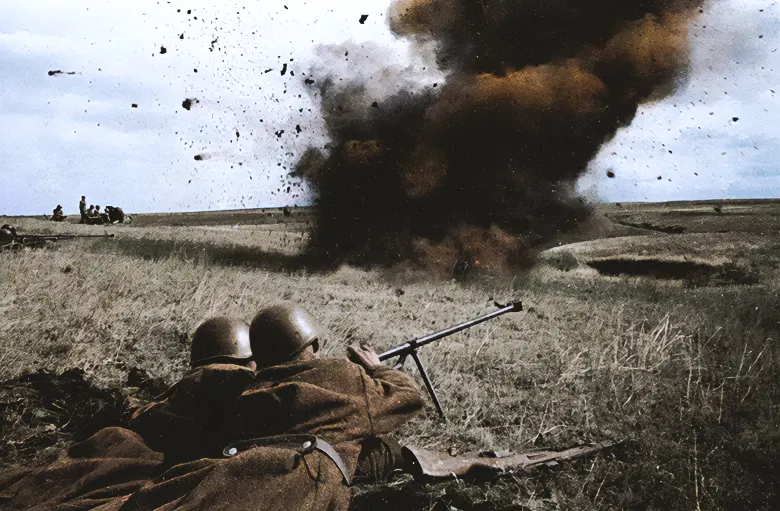
A day later, the Fuhrer began withdrawing troops after being notified that the Allies had landed on Sicily, effectively terminating the Kursk offensive.
Aftermath
Hitler attempted another offensive with Operation Roland before sending some of the troops to reinforce Italy, but the Soviets then launched Operation Kutuzov, a massive counterattack that pushed the Germans beyond Citadel’s starting point.
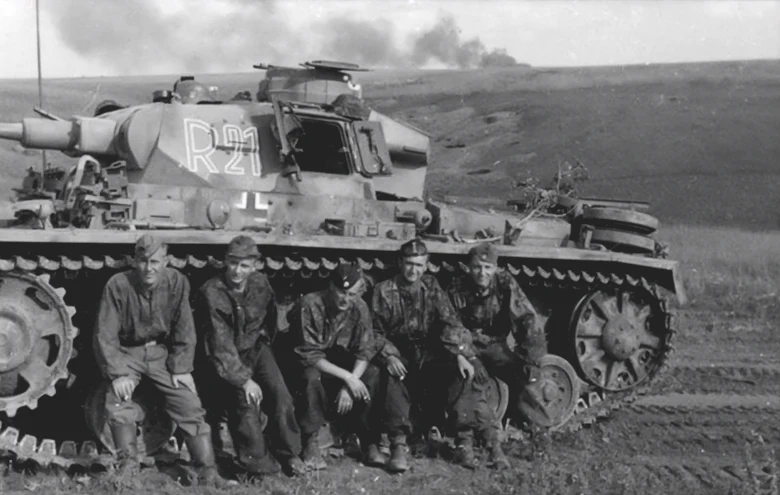
In the end, it is regarded that the Germans won the battle when it came to military tactics and the overall performance of their units. Despite being highly outnumbered, they inflicted almost twice the number of casualties on the enemy.
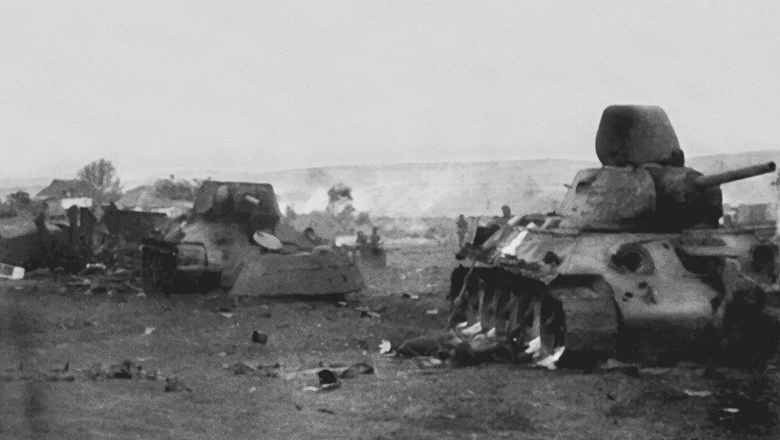
And even though the statistics are still debated to this day, historians estimate that the Soviets lost more than 500,000 men while the Germans only lost 200,000.
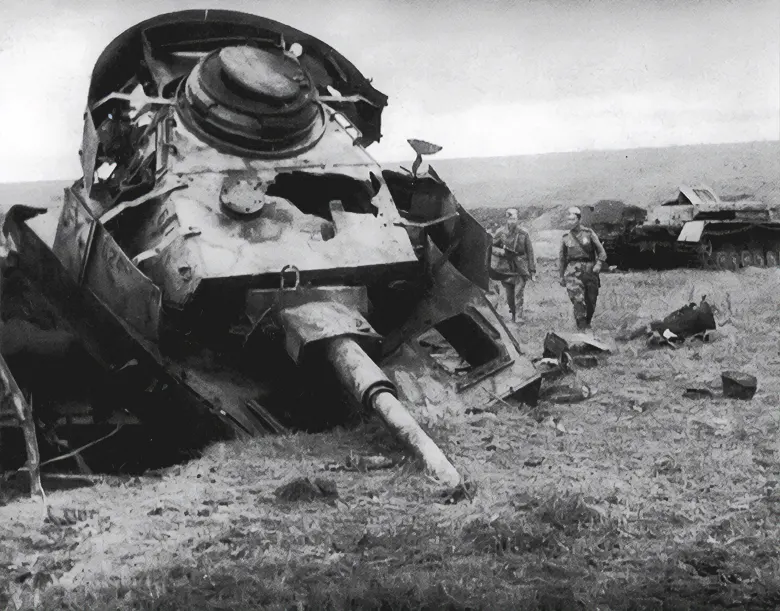
As for equipment, Germany lost more than 700 tanks and never recovered. Meanwhile, the Russians lost around 6,000 tanks and assault guns, but its superior industry quickly made up for them.
In addition, the German aces honored the Luftwaffe by shooting down 2,000 enemy aircraft at the cost of 680.
Kursk proved to be the beginning of the end for the German presence in Russia and the last German blitzkrieg of the Eastern Front.
